Pauline Rhodes: Dark Watch
19 February 2016 - 24 March 2016
Gallery One
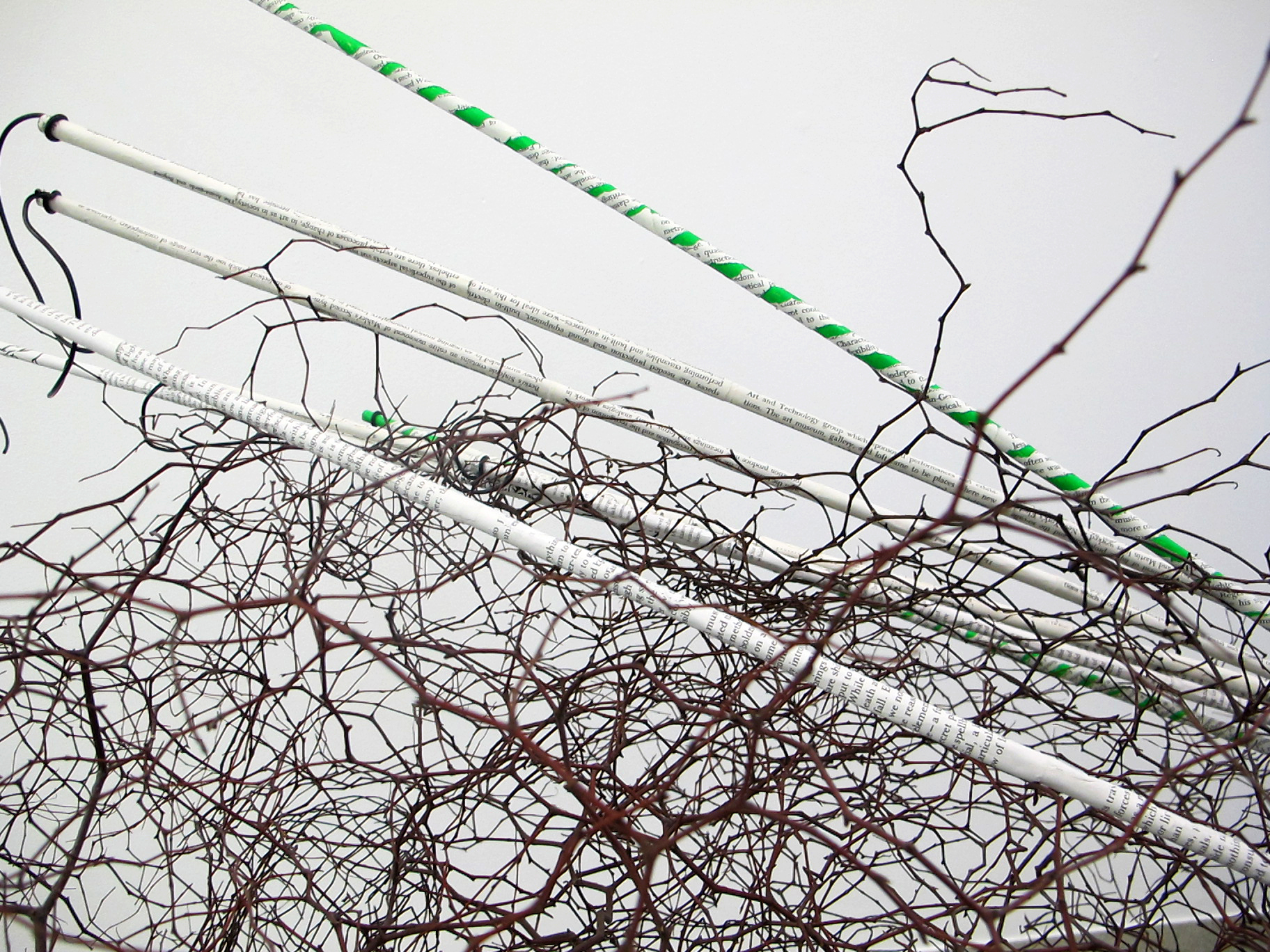
Pauline Rhodes, Dark Watch (detail), 2015.
Pauline Rhodes’ artwork, characterised by her long-term concern with the environment, is situated in two spatially separate but materially and conceptually connected zones — temporary sculptural interventions outdoors that are documented, and gallery based sculptural installations. While these physical and conceptual spaces are often described as opposites: open and closed space, exterior and interior, nature and culture, through small-scale interventions and over more than 40 years, Rhodes’ work has consistently drawn connections between them. As Christina Barton has written, “rather than maintain rigid distinctions between these binary terms as a system of structured opposites, Rhodes disrupts them in order to re-conceive them as related and intertwining.”1 Rhodes achieves this by handling the materials relating to ‘natural’ and ‘built’ environment responsively. She fluidly moves between the two contexts, transferring and reconfiguring natural and human-made materials in response to the contingencies of each environment.
For Dark Watch, Rhodes has worked into the ST PAUL St Gallery space with a combination of materials that are new and reused, natural and human-made. Her actions result in forms she refers to as ‘twists’, ‘folds’, ‘overlays’ and ‘crumples.’ The mass of the work is not weighty; rather there is a sense of both volume and lightness within the space. Central to the installation are the tall, thin, leaning aluminium rods propped with steel rods and stained cedar offcuts. They are the sentinels of the Dark Watch. Most of these Rhodes has previously installed within the intertidal zone (a space that she has worked with since 1972) at Brighton Beach, Christchurch. There they were installed as watchers, a gesture of concern for the effects of climate change, rising sea levels and the pollution of the oceans. Now they have been redeployed as watchers in the gallery space, where they lean gracefully flexed towards the windows and the street outside.
The forms and colours of the materials often echo each other, as with the clusters of rusted wire netting and the reddish branches of the Pōhuehue (muehlenbeckia complexa). These are materials frequently used by Rhodes. Both the Pōhuehue, slowly drying out over the course of an exhibition, and the rusting wire netting, which was once galvanised, slowly decomposing as it succumbs to the process of oxidation, are altered by their location — the netting has been deliberately left outside, the Pōhuehue has been cut off and brought inside. With the shift in context come other shifts: environment and time enact changes to the materials themselves.
1 Christina Barton, 'Moving /On: time, place and the body in the work of Pauline Rhodes', in Ground/Work: The Art of Pauline Rhodes (Adam Art Gallery & Victoria University Press: Wellington, 2002), 15.
Presented in association with:


Pauline Rhodes Dark Watch was co-produced as a publication in association with The Physics Room and with the support of Creative New Zealand.

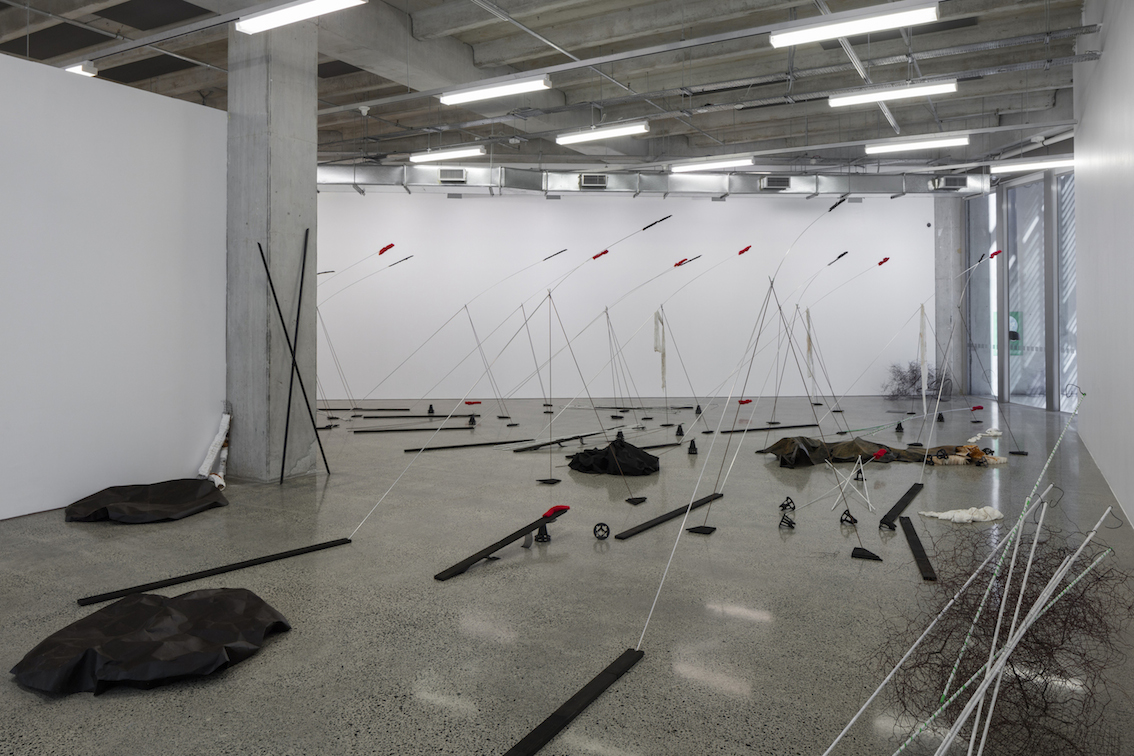
Pauline Rhodes, Dark Watch (detail), 2015.
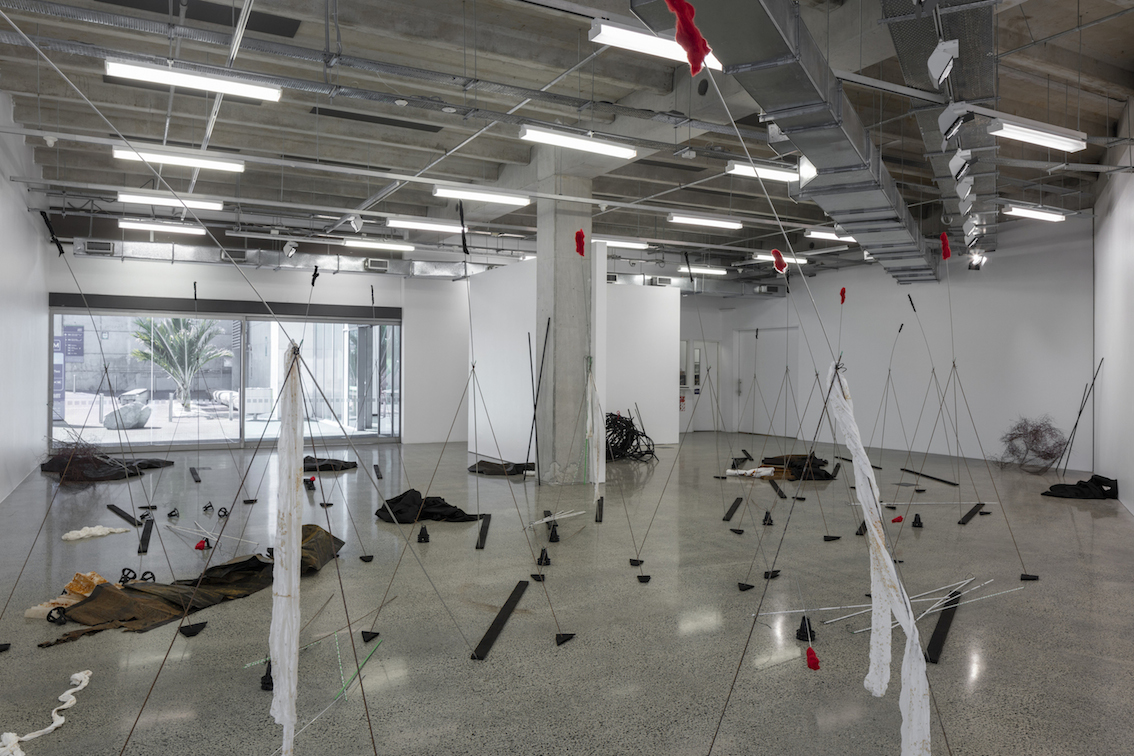
Pauline Rhodes, Dark Watch (detail), 2015.
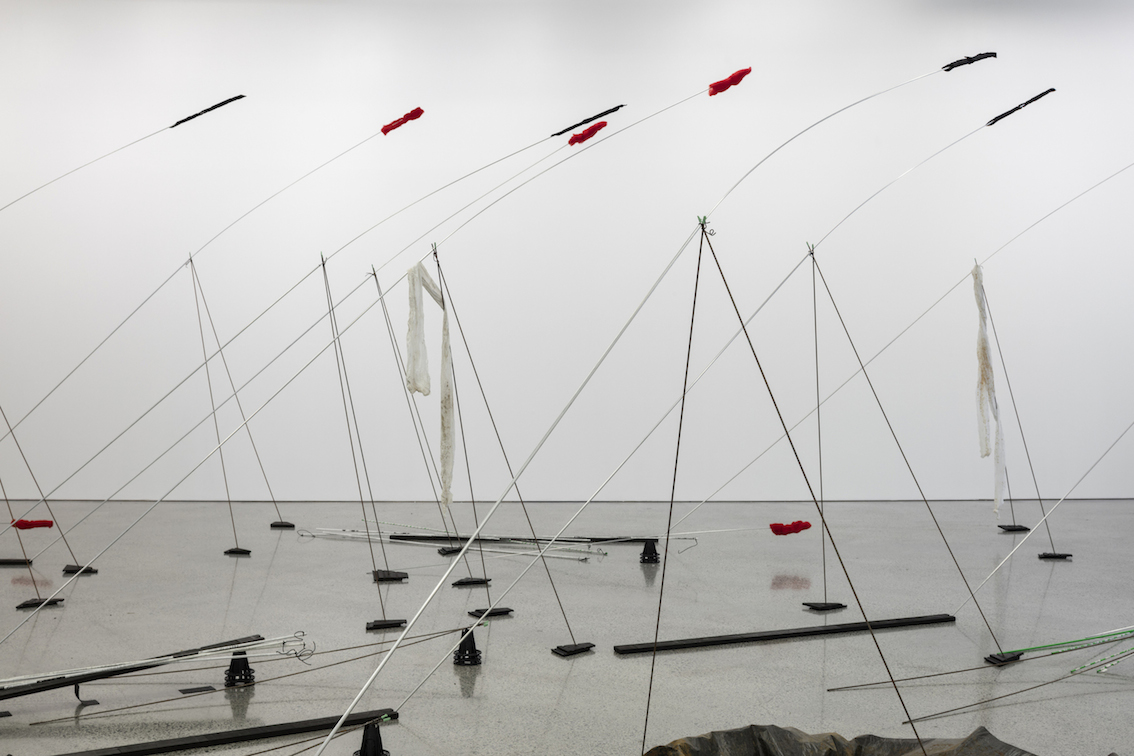
Pauline Rhodes, Dark Watch (detail), 2015.
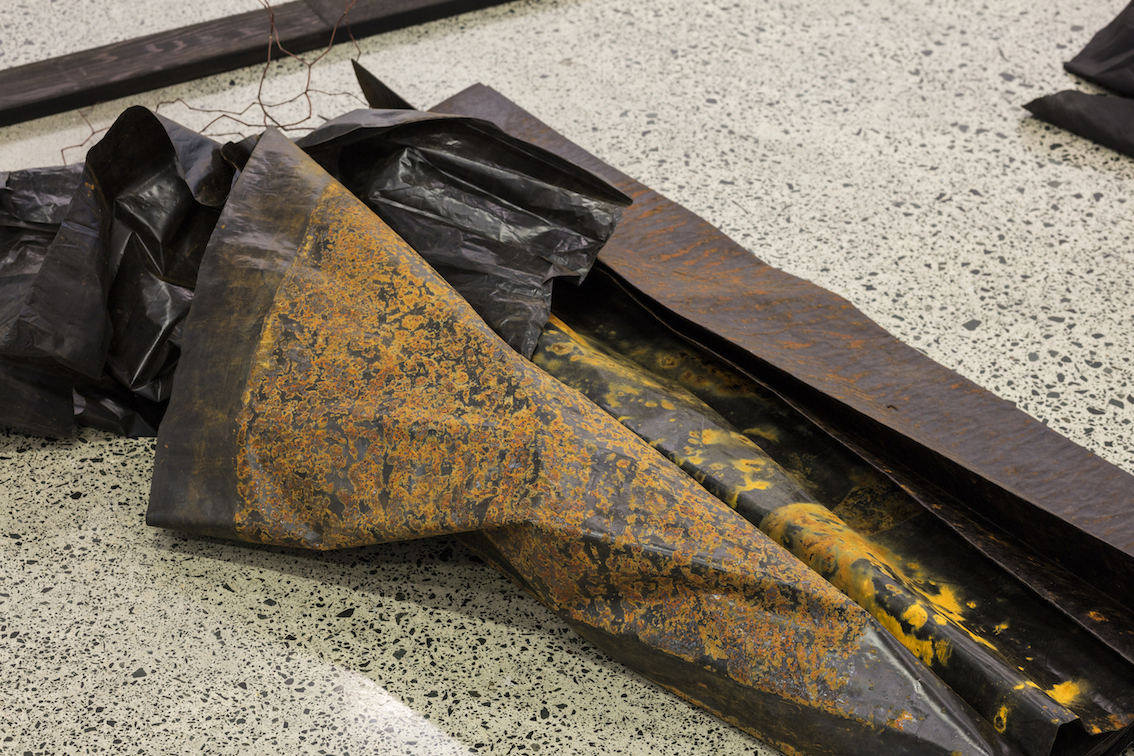
Pauline Rhodes, Dark Watch (detail), 2015.
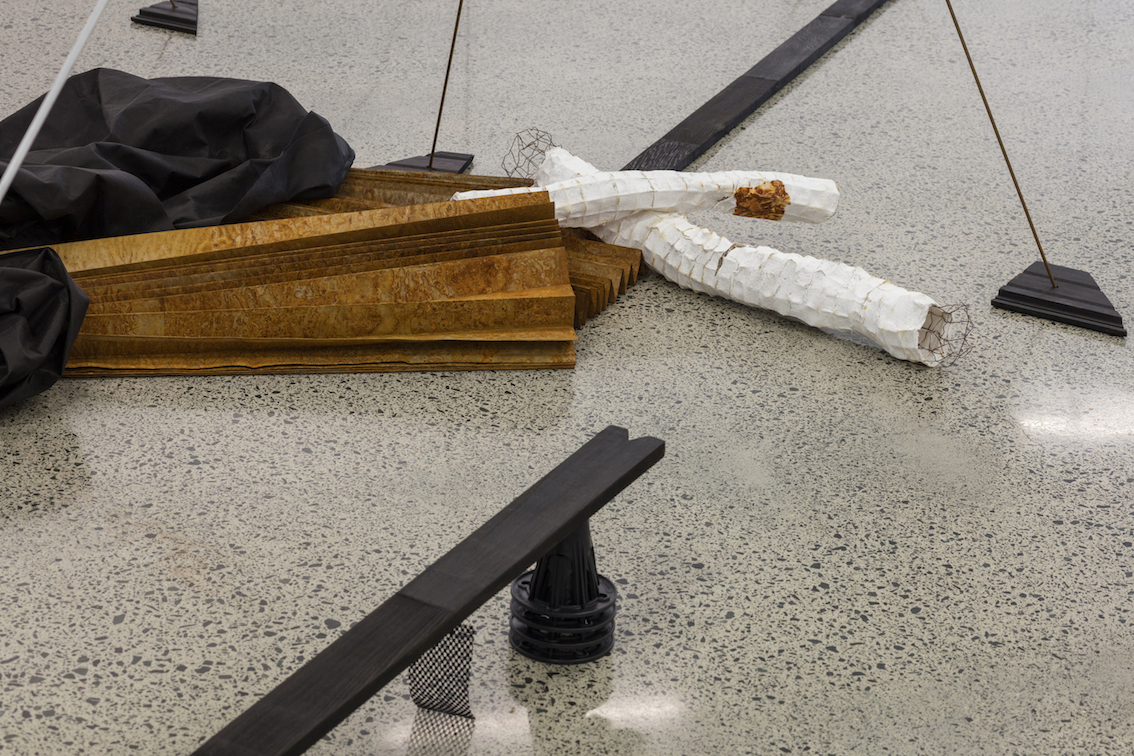
Pauline Rhodes, Dark Watch (detail), 2015.
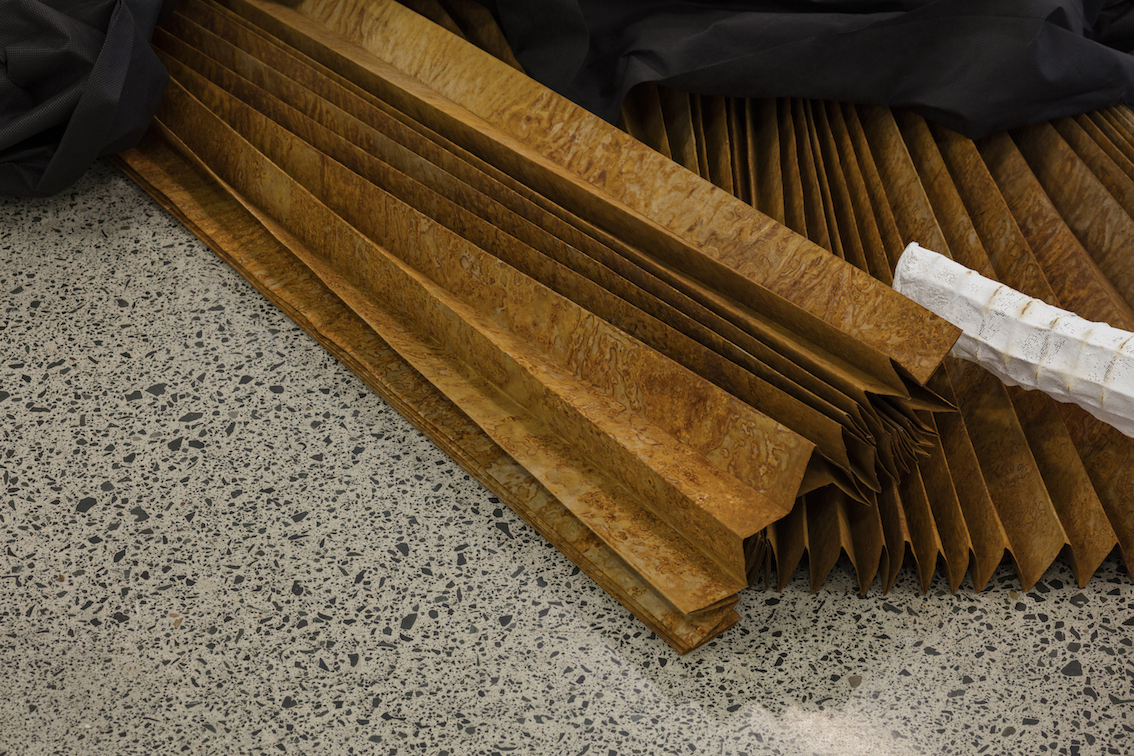
Pauline Rhodes, Dark Watch (detail), 2015.
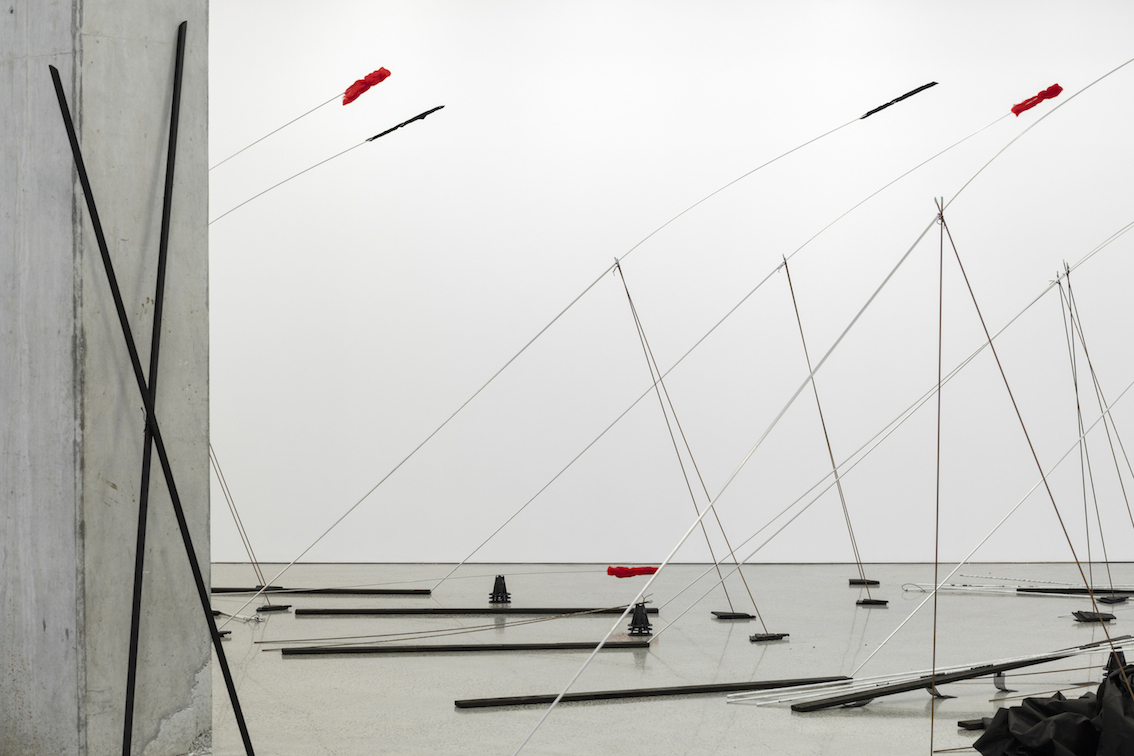
Pauline Rhodes, Dark Watch (detail), 2015.